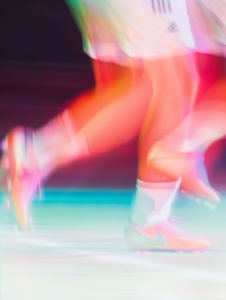29/01/2015
The Court of Justice of the European Union (CJEU) has recently handed down a landmark decision relating to the patentability of parthenote-derived stem cells. The CJEU ruled that Article 6(2)(c) of the Biotechnology Directive (98/44/EC) must be interpreted as meaning that an unfertilised human ovum whose division and further development has been stimulated by parthenogenesis does not constitute a ‘human embryo’ if it does not have the inherent capacity of developing into a human being. In doing so, the CJEU has opened the door to patents in the parthenote-derived stem cell field.
Technical Background
Parthenogenesis is the process of activating an oocyte to undergo cell division and thereby become a pathenote, in the absence of a sperm cell, by a variety of chemical and electrical techniques. According to current scientific knowledge, human parthenotes do not have the capacity of developing into a human being owing to the absence of paternal DNA which is responsible for the development of extra-embryonic tissue. However, human parthenotes may still serve as a source of pluripotent stem cells; cells which give rise to all the cell types that make up the body.
Case Background
ISCC filed two patent applications at the UK Intellectual Property Office (UK IPO) directed to human stem cells derived from parthenotes, both of which were refused. The hearing officer held that the inventions were “capable of commencing the process of development of a human being just as an embryo created by fertilisation of an ovum can do so”, within the meaning of paragraph 36 of the judgment in Brüstle (C-34/10). Therefore, the inventions involve the use of human embryos for industrial or commercial purposes, which is excluded from patentability under Article 6(2)(c). ISCC appealed the decision of the UKIPO to the High Court of Justice of England and Wales, which in turn, referred the following question to the CJEU for clarification:
“Are unfertilised human ova whose division and further development have been stimulated by parthenogenesis, and which, in contrast to fertilised ova, contain only pluripotent cells and are incapable of developing into human beings included in the term “human embryos” in Article 6(2)(c) of Directive 98/44/EC on the Legal Protection of Biotechnological Inventions?”
“Commencing The Process Of Development Of A Human Being”
According to the Comptroller and the High Court, it is the phrase “commencing the process of development of a human being” in the Brüstle case which is ambiguous. Does this expression emphasise the parallelism of the first developmental steps, i.e. whether an organism engages in a process of cell division and differentiation similar to that of a fertilised ovum, or, the fact that the organism has the inherent capacity of developing into a human being?
The Advocate General’s Opinion
The Advocate General (AG) adopted the latter view. According to the AG, the CJEU erroneously established a functional equivalence between fertilised ova, non-fertilised ova subjected to somatic cell nuclear transfer and parthenotes, owing to limited and incorrect scientific facts available to the court at the time. The AG opined that unfertilised human ova whose division and further development have been stimulated by parthogenesis are not included in the term ‘human embryos’ in Article 6(2)(c), as long as they are not capable of developing into a human being and have not been genetically manipulated to acquire such a capacity.
However, the AG stated that the non-exhaustive character of Article 6(2) could still prohibit such inventions from being patentable. Additionally, even if inventions directed to parthenotes are not excluded by Article 6(2), they still could be by Article 6(1): “Inventions shall be considered to be unpatentable where their commercial exploitation would be contrary to ordre public or morality…”. It would be left up to national courts to decide.
Conclusion
The CJEU’s ruling has followed the AG’s recommendation and thus provides some relief for applicants in the stem cell field. The ruling could open the way for patentable stem cell inventions by relying on pluripotent stem cells derived from parthenotes.
This article is for general information only. Its content is not a statement of the law on any subject and does not constitute advice. Please contact Reddie & Grose LLP for advice before taking any action in reliance on it.

